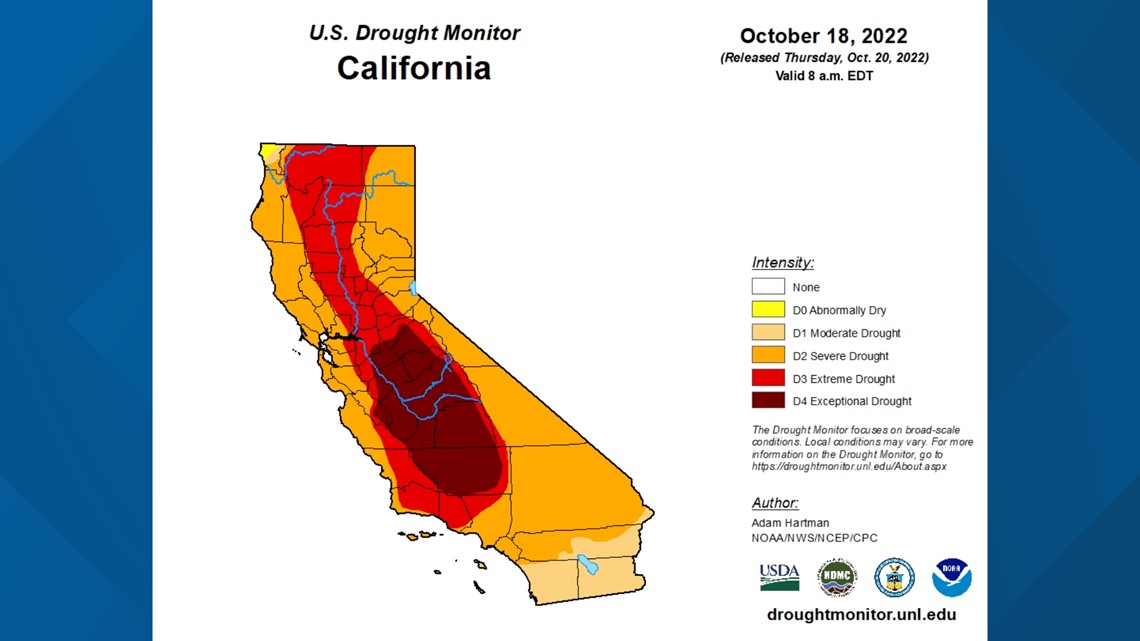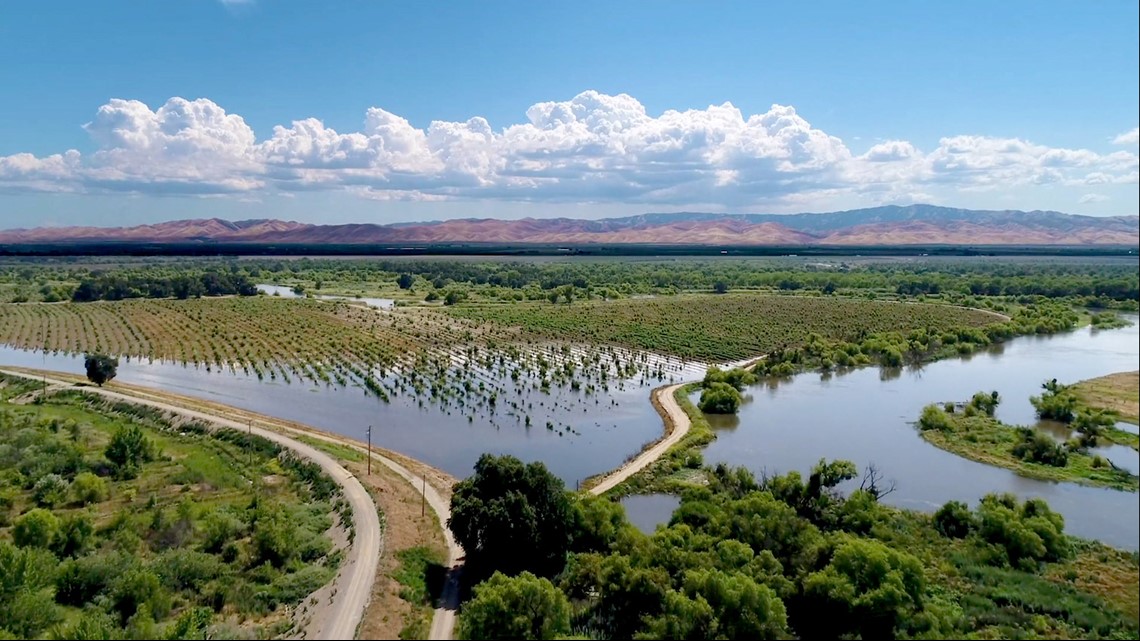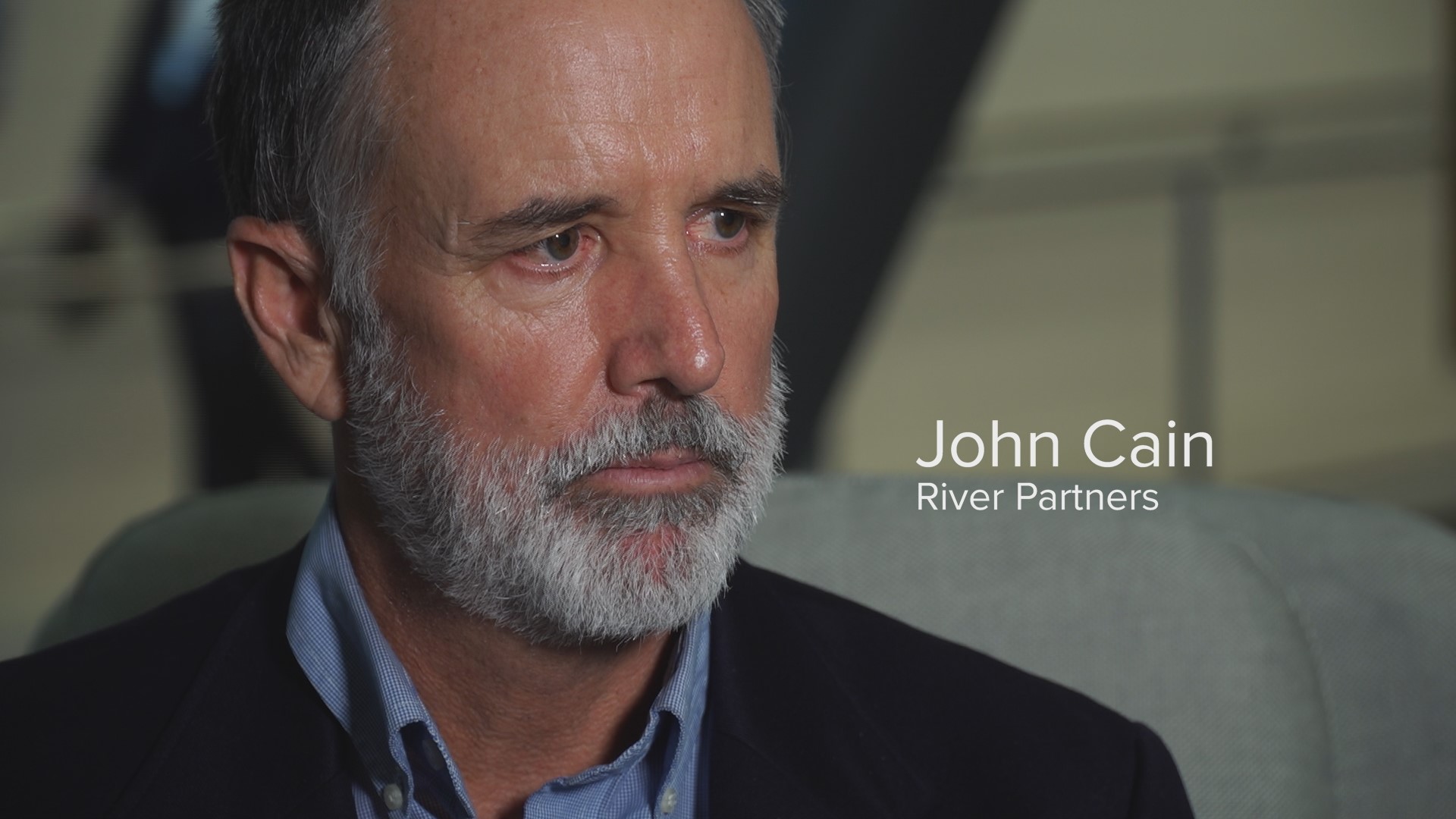SACRAMENTO, Calif. — Although fall temperatures have finally arrived, the drought hasn't gone anywhere.
Following a very warm start to October, California is finally experiencing some of the fall-like conditions that most have been looking forward to. Temperatures in Sacramento are supposed to be in the 60s and 70s this weekend and beyond, but no soaking rain storms are in the forecast.
October is typically when California sees its first storm of the year, but it doesn't look like any major storms are headed towards the state this month. This means no drought relief is in sight early on in an extremely vital water year for California.


Although the drought is dominating conversation, the next big flood is just around the corner. The 2016-17 winter is a prime example of this; record rain and snow fell following years of drought, stressing California's infrastructure to the max.
The Central Valley is historically extremely prone to flooding, such as in 1862 when Sacramento was underwater for months. The state has since built reservoirs to control water flow and levees to protect cities and farmland, but the Central Valley is still under flood threat.
RELATED: Sacramento Weather Forecast
Large portions of the central valley's flood plains are developed and could be in danger once the next big flood hits.
River Partners, a nonprofit out of Chico, is setting out to purchase and re-establish natural flood plains across the state, restoring rivers in the process and alleviating some flood danger.
"What river partners does is buys up floodplain land and where and restores it to habitat and allows the floodwaters to overflow onto these floodplain lands, creating multiple benefits for people like clean water parks, open space, and carbon sequestration," said John Cain, senior conservation director at River Partners.
The restored riparian forests that grow on floodplains act as an effective carbon sink.


By restoring floodplains, flood risk decreases because "it gives space for floodwaters to spread out safely," according to Cain.
While flood risk is high across the entirety of the valley, vulnerabilities are highest in the San Joaquin Valley due to a lackluster levee system. River Partners' flagship project, Dos Rios, is one of many projects that gives the state more flexibility in controlling water flow as climate change makes precipitation patterns more volatile.
According to riverpartners.org, since 2012, River Partners and an alliance of dedicated public, private, and nonprofit partners planted more than 350,000 native trees and vegetation along nearly eight miles of the San Joaquin and Toulumne rivers that converge at the heart of Dos Rios Ranch. Dos Rios is set to be the newest state park in California.
Cain urged people living in floodplains to get flood insurance, whether or not the government requires it and development to stop in these areas.
"What building in the floodplains does behind a levee or below a dam is puts a whole bunch of people in harm's way and enriches some developer that put houses in the floodplain. They're not paying for the dam. They're delivering a bill, almost certainly, to future generations to have to pay for that foolish development," said Cain.
WATCH ALSO:



















